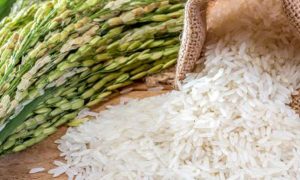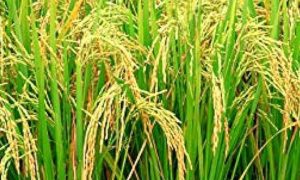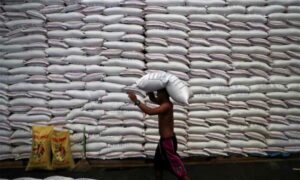Subsidies and MSP:It makes most sense for farmers to keep growing rice and wheat

Rice and wheat are commercially preferred by Indian farmers due to high yields and assured procurement at MSP, supported by power and water subsidies. Pulses and oilseeds, despite offering higher net gains, are less attractive without similar support. To encourage crop diversification, the government could remodel the MSP system, targeting it towards small farmers, and reconsider subsidies. This approach might make growing other crops more viable, addressing imbalances in the agricultural landscape.
The high yield per hectare of rice and wheat when compared to pulses and oilseeds, and state procurement at assured prices make them commercially more profitable than other crops. An MSP mechanism only for poor farmers and a review of power subsidies can ease this imbalance.
The agricultural landscape in poor farmersis quite static. Farmers prefer to grow rice and wheat because of two reasons. The first is that some states subsidize power and water, which helps ensure large scale cultivation.
Second, the Food Corporation of India, which is the procurement agency for the government, has an open-ended scheme under which it buys any amount of rice and wheat at the minimum support price (MSP). This MSP keeps increasing every year as it is based on a cost-plus formula.
Therefore, there is a guaranteed return on capital, which does not hold for other crops since for them there is no assured buyback. The procurement is done of a fair average quality and hence there is less incentive to move to higher quality cereals.
In fact, with the government’s flip-flop policy on exports, sometimes allowing and at other times barring them, it makes sense to move to the lowest acceptable quality.
Successive governments make announcements on giving a thrust to oilseeds and pulses output. This is necessary because the country falls short of production very often. When it comes to oilseeds, the doors are still wide open for imports as India, even in normal times, imports almost 60% of its domestic requirements.
In the case of pulses, it is déjà vu when output of tur and urad comes down. As this news spreads, potential exporters in Africa, Canada and Australia also raise their prices.
There is evidently a need for crop diversification given the limited quantity of arable land. Several schemes are announced and implemented for growing millets, oilseeds and pulses, but the progress has been limited.
In this context, it is necessary to go back to the textbook and see if there is value to be had by the farmer in heeding to such advice. It could be a case that farmers may not be too eager to grow these crops.
Cultivation can be looked at as a pure commercial venture from the point of view of the farmer. Just as corporates work for profits, which is euphemistically called shareholder value, so do farmers who work to earn the highest possible income. Therefore, the price received at the time of harvest relative to its cost of cultivation matters.
Crops require different agroclimatic conditions but it is assumed here that a farmer can grow any crop on a particular piece of land. Data from the ministry of agriculture is taken for cost of cultivation as well as wholesale prices for an array of crops for the latest year.
The yield per hectare is for 2022-23, costs are projections made by the ministry for 2024-25 and the prices are for 2023-24. This information is provided in the table.
From the table, it is clear that given ceteris paribus conditions, rice and wheat are the most lucrative crops for farmers. In terms of yield per hectare, wheat and rice are at the top. Maize has the highest yield per hectare but in terms of income, ranks low.
Its value is low since it is used mainly as animal and poultry feed and only a limited part of it goes for human consumption. While rice and wheat offer a low net gain of between ₹12-17/kg, the higher physical production enables the highest total income for a season.
Pulses offer the highest net gain with tur offering up to ₹40/kg and urad ₹30/kg. Moong is lower at ₹22/kg, which is still higher than that earned on wheat and rice. Among pulses, chana has the highest yield per hectare.
But the net income earned is lower than that for tur. In case of oilseeds, groundnut can yield as much as ₹40,000/hectare but would still fall short of wheat by 10%. Growing groundnut is more lucrative than soybean.
Therefore, from a purely commercial perspective, it makes sense for farmers to grow more rice and wheat. It is because of soil and agroclimatic conditions that they cannot be grown in parts of the country other than the rice and wheat-growing belts.
It can also be said that even if pulses, millets or oilseeds are cultivated in the rice and wheat growing belts, it would not make commercial sense.
The solution here is that the ecosystem that exists for rice and wheat needs to be replicated for other crops. This would mean having their procurement and distribution. However, there is no policy for stocking pulses and oilseeds or distributing them through fair price shops on a regular basis.
Therefore, a procurement scheme can turn out to be expensive and inefficient as it may only serve the purpose of price stabilization when prices rise in the market.
The alternative is to remodel the MSP mechanism, which has long been due. Having an open-ended procurement system is an anachronism in the current context. There is a need to filter out procurement only to small farmers and not the rich.
Also, states need to fix their tolerance limits for subsidizing power and water to ensure that farmers look at other crop options. This is evidently not an easy task as withdrawing any benefit is tough. But a call needs to be taken at some point of time.















